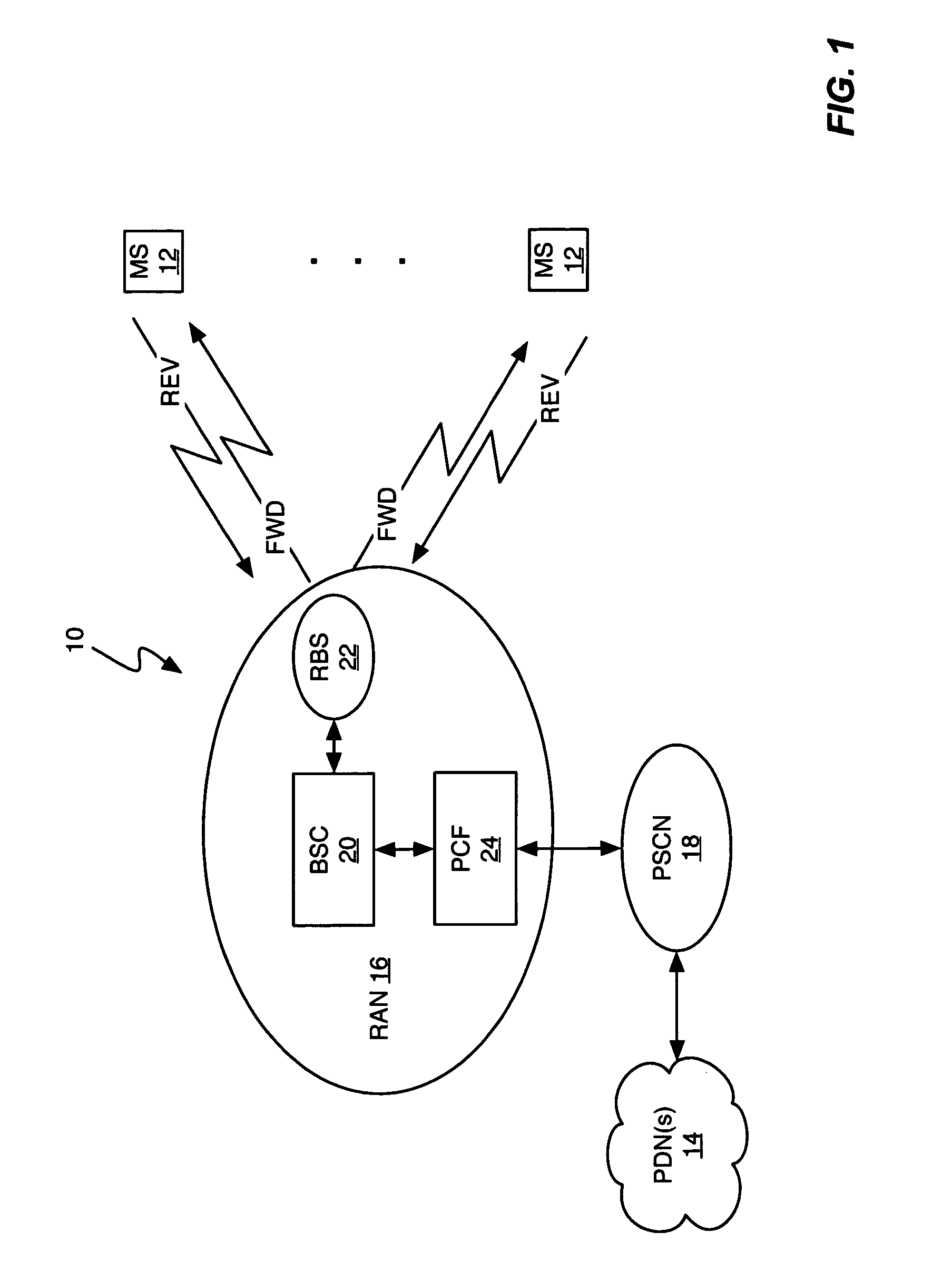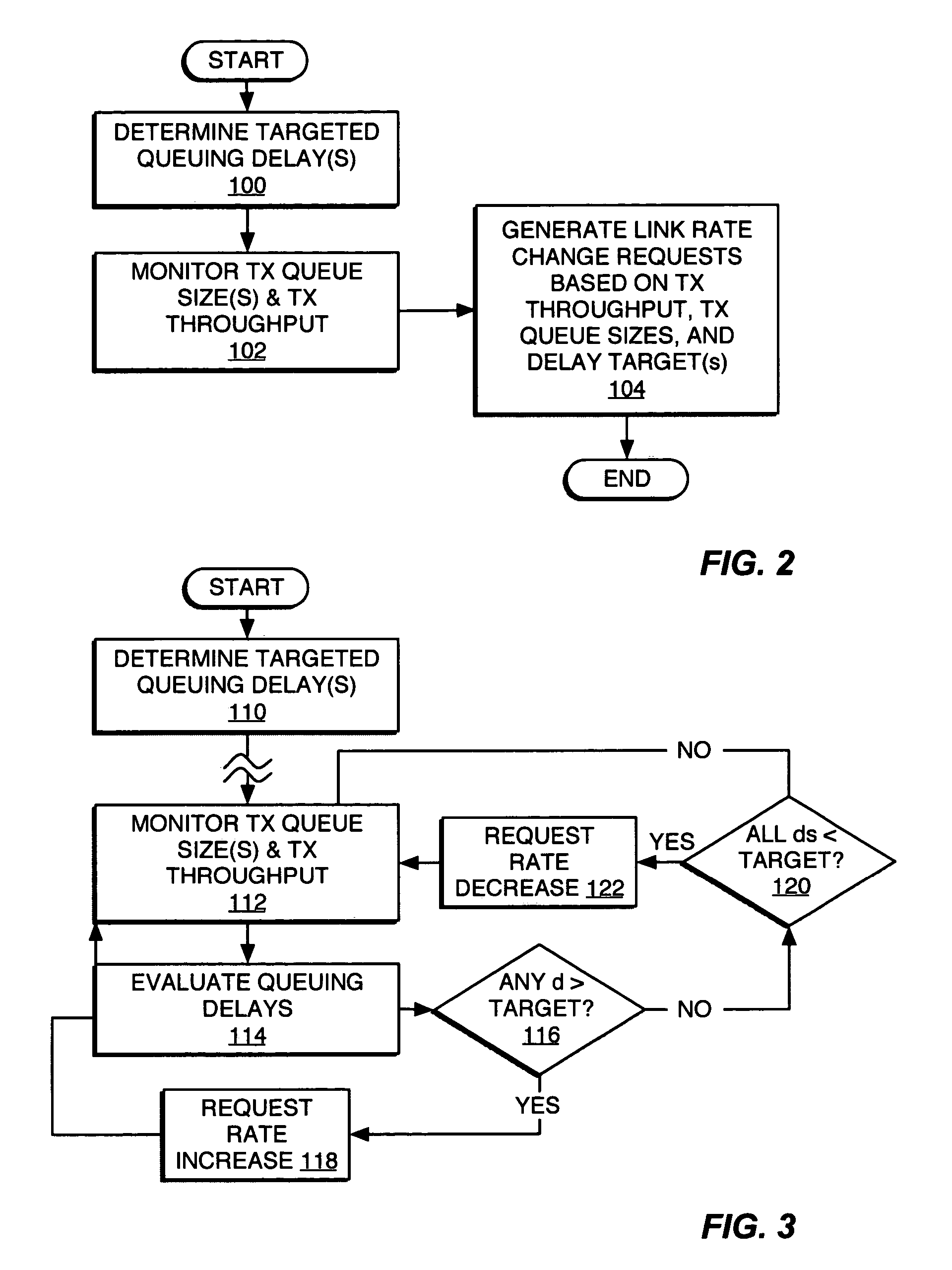Queuing delay based rate control
a delay and rate control technology, applied in the field of wireless communication networks, can solve the problems of qos violation of reverse link performance, need for additional signaling between mobile stations and base stations,
- Summary
- Abstract
- Description
- Claims
- Application Information
AI Technical Summary
Benefits of technology
Problems solved by technology
Method used
Image
Examples
Embodiment Construction
[0018]FIG. 1 illustrates an exemplary wireless communication network 10 that communicatively couples a plurality of mobile stations 12 to one or more Public Data Networks (PDNs) 14, such as the Internet. As illustrated, network 10 comprises a Radio Access Network (RAN) 16 that is coupled to the PDNs 14 a Packet Switched Core Network (PSCN) 18, which may comprise various Internet Protocol (IP) packet routers, gateways, and one or more authentication / authorization entities. Those skilled in the art should thus appreciate that network 10 as depicted is simplified for clarity and in actuality may include additional elements, such as Circuit Switched Core Network (CSCN) coupling RAN 16 to the Public Switched Telephone Network (PSTN). Further, it should be noted that network 10 may be configured according to various network standards, such as, among others, IS-2000 or Wideband CDMA (WCDMA) standards.
[0019]Regardless, RAN 16 provides the wireless interface to the mobile stations 12 via for...
PUM
 Login to View More
Login to View More Abstract
Description
Claims
Application Information
 Login to View More
Login to View More - R&D
- Intellectual Property
- Life Sciences
- Materials
- Tech Scout
- Unparalleled Data Quality
- Higher Quality Content
- 60% Fewer Hallucinations
Browse by: Latest US Patents, China's latest patents, Technical Efficacy Thesaurus, Application Domain, Technology Topic, Popular Technical Reports.
© 2025 PatSnap. All rights reserved.Legal|Privacy policy|Modern Slavery Act Transparency Statement|Sitemap|About US| Contact US: help@patsnap.com



